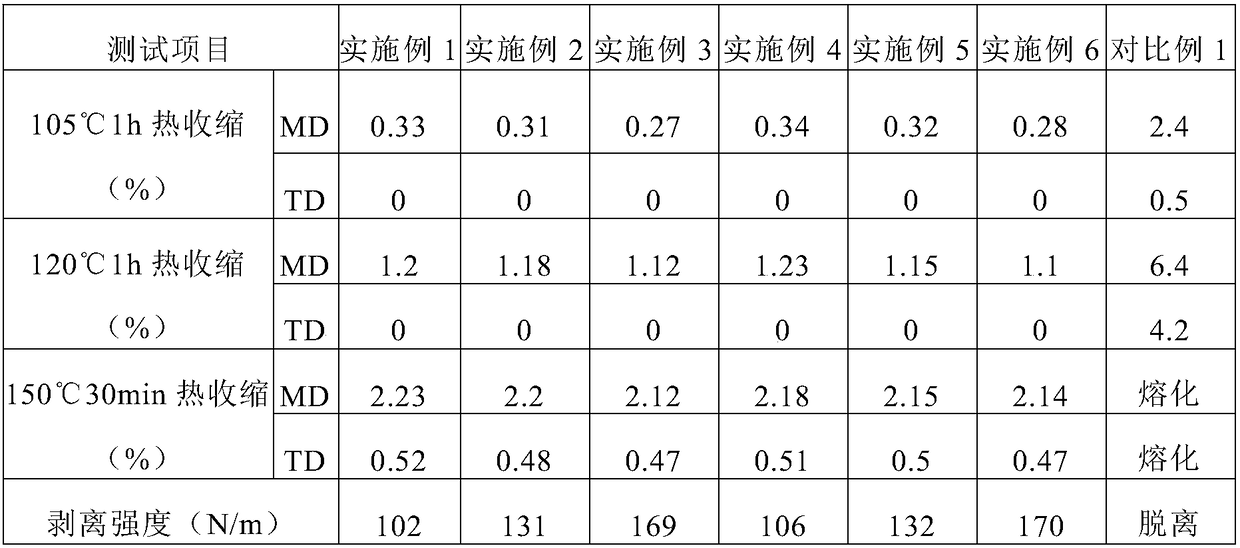Sol-coated membrane and preparation method and use thereof
A diaphragm and sol technology, applied in the field of electrochemistry, can solve problems such as combustion, poor consistency, and diaphragm shrinkage
- Summary
- Abstract
- Description
- Claims
- Application Information
AI Technical Summary
Problems solved by technology
Method used
Image
Examples
preparation example Construction
[0059] In one embodiment of the present invention, the preparation method of described sol coating liquid comprises the following steps:
[0060] (i) take inorganic sol particle and the water as dispersion medium in proportion;
[0061] (ii) Glue making: use a mixer or mixer to stir for more than 1 hour to produce a clear glue;
[0062] (iii) Addition of binder: Add the water-based binder into the clarified glue solution, and use a mixer or mixer to stir for more than 1 hour to form a stable sol solution;
[0063] (iv) Vacuum defoaming: adjust the mixer to slow stirring, vacuumize for 30min, and carry out defoaming;
[0064] (v) Filtration: vacuum filter the above-mentioned degassed sol solution to obtain the sol coating solution required by the present invention.
[0065] In order to improve the surface tension of the obtained sol coating solution, increase the uniformity of coating and coating, the step of adding surfactant can be added between the above-mentioned (iii) st...
Embodiment 1-6
[0108] Preparation of sol-coated separators
[0109] 1) Select the SV10 series PE microporous base film produced by Shanghai Enjie Company, with a thickness of 10 μm;
[0110] 2) The PE microporous base film is passed through the MCD type coating machine (purchased from Fuji Machinery Industry Co., Ltd.), and the sol coating solution described in Table 1 and Table 2 is coated on the PE microporous film through gravure printing at the same time After being baked in an oven, a PE microporous membrane covered with an inorganic sol coating can be prepared, and the thickness of the coating is 2 μm.
[0111] Table 1
[0112]
[0113] Table 2
[0114]
[0115] Note: The proportion of each material is calculated as solid
Embodiment 7-10 and comparative example 2
[0124] Preparation of lithium-ion batteries
[0125] The lithium-ion battery consists of a positive electrode system, a negative electrode system, and an electrolyte system. The positive electrode uses lithium manganese oxide, the negative electrode uses graphite, and the electrolyte uses an EC / EMC system. The concentration of lithium salt (LiPF6) is 1mol / L. Preparation process: the positive electrode is composed of lithium manganese oxide, the negative electrode is composed of graphite, carboxymethyl cellulose (CMC), and styrene-butadiene rubber emulsion in a weight ratio of 100:2:3, and the negative electrode uses water as the solvent to make negative electrode slurry. Diaphragms shown in Table 3. The cut pole pieces are crimped and packed with aluminum-plastic film, organic electrolyte is added in the state of nitrogen, the battery is evacuated and sealed, and then the battery is aged at room temperature for 3 hours, and it is formed into a lithium-ion battery.
[0126] Th...
PUM
| Property | Measurement | Unit |
|---|---|---|
| thickness | aaaaa | aaaaa |
| particle diameter | aaaaa | aaaaa |
| density | aaaaa | aaaaa |
Abstract
Description
Claims
Application Information
 Login to View More
Login to View More - R&D Engineer
- R&D Manager
- IP Professional
- Industry Leading Data Capabilities
- Powerful AI technology
- Patent DNA Extraction
Browse by: Latest US Patents, China's latest patents, Technical Efficacy Thesaurus, Application Domain, Technology Topic, Popular Technical Reports.
© 2024 PatSnap. All rights reserved.Legal|Privacy policy|Modern Slavery Act Transparency Statement|Sitemap|About US| Contact US: help@patsnap.com










